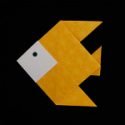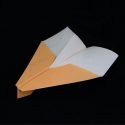Noshi 3 Instructions
The method of folding described below was determined by reverse engineering; it is not knowledge derived from an individual who is familiar with the ancient art of noshi folding. Thus, the methodology will produce the “look” but it may not represent the “way” it should be folded.
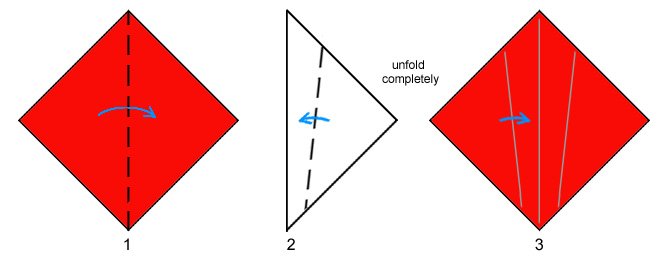
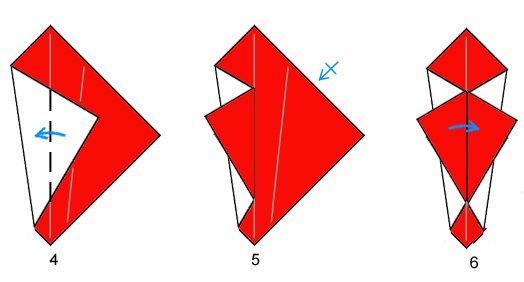
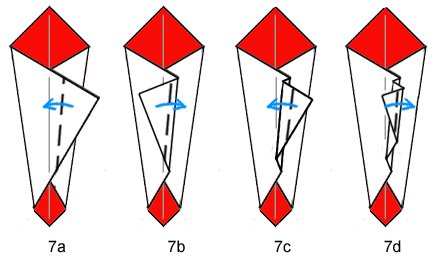
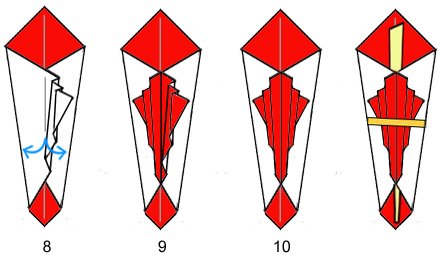
In step 8, the pleats are separated into the left and right sides of the noshi. One side of the pleats is complete but the other side (right side) needs to have the folds reversed so mountain folds become valley folds and vice versa.
As shown on the last image, the folds are kept in place with a strip of paper (often gold or silver in color). Noshi can also be bound with mizuhiki. Mizuhiki is a bundle of stiff string knotted in a decorative manner (it is an art form in itself and the method of knotting has symbolic meaning). The completed noshi typically has a strip of textured paper inserted into the wrapper. This strip of paper (often yellow in color) represents stretched & dried abalone (shellfish). The significance of abalone is unknown and in modern times, the inner strip of textured paper is sometimes omitted.
Read more about noshi from Isao Honda’s (Noshi: Classic Japanese Origami or Eric Kenneway’s Complete Origami: An A-Z of facts and folds, with step-by-step instructions for over 100 projects.
More Noshi Instructions
-
Books with Easy Origami
- Easy Origami: over 30 simple projects by John Montroll
- Origami Fun Kit for Beginners by John Montroll
- My First Origami Kit by Joel Stern
- Easy Origami: A Step-by-Step Guide for Kids by C Alexander & M Meinking
- Fun With Easy Origami (Dover Origami Papercraft)
- Origami: A Step-by-Step Introduction to the Art of Paper Folding by T Cook & S Henry
- Easy Origami For Kids Book Traditional Japanese Folding Papers Overs 20 Projects by J Wish
- Easy Origami for Kids: Over 40 Simple Origami Projects by O Brooks
Please Help
Please help by reporting broken links so that we can fix them. One easy message from you can save us hours and hours of clicking. Thanks!
-
More Origami Diagrams and Instructions…
-
These free origami instructions are made available to you by the paper folding community at large. If you have a diagram you would like to share, or if your diagram is listed here and you wish to have it removed, please Contact Us. Diagrams are intended for personal use. Copyright of the models lie with the origami creators and designers. Please contact the designer and/or creator directly for non-private usage of a model and/or artwork.















